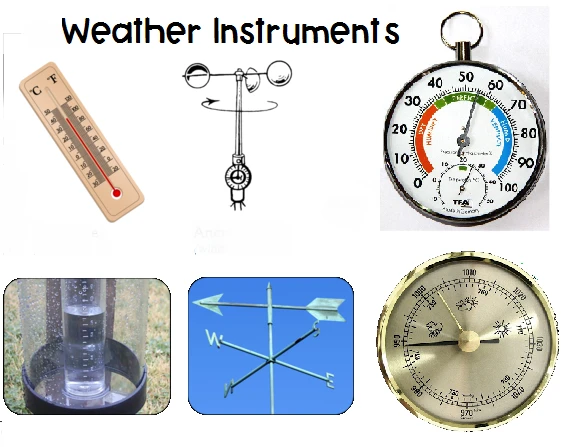
# Weather Instruments: Essential Tools for Accurate Forecasting
## Introduction to Weather Instruments
Weather instruments are specialized tools designed to measure various atmospheric conditions. These devices play a crucial role in meteorology, helping scientists and weather enthusiasts collect accurate data for forecasting and climate studies. From simple thermometers to sophisticated radar systems, weather instruments come in many forms, each serving a specific purpose in atmospheric observation.
## Common Types of Weather Instruments
### Thermometers
Thermometers measure air temperature, one of the most fundamental weather parameters. Modern digital thermometers provide quick and precise readings, while traditional mercury or alcohol thermometers remain reliable options for many applications.
### Barometers
Barometers track atmospheric pressure, which is essential for predicting weather changes. Mercury barometers were historically common, but today’s aneroid and digital barometers offer more portable and convenient alternatives.
### Anemometers
These instruments measure wind speed and direction. Cup anemometers with rotating cups are widely used, while ultrasonic anemometers provide more advanced measurements without moving parts.
### Hygrometers
Hygrometers determine humidity levels in the air. Psychrometers (wet-and-dry bulb thermometers) and electronic hygrometers are the most common types used in weather stations.
### Rain Gauges
Simple yet effective, rain gauges collect and measure precipitation. Standard cylindrical gauges provide basic measurements, while tipping bucket rain gauges offer automated recording capabilities.
## Advanced Weather Measurement Tools
### Weather Radars
Doppler radar systems detect precipitation, measure its intensity, and track storm movements. These powerful instruments provide crucial data for severe weather warnings and forecasting.
### Weather Satellites
Orbiting satellites offer a global perspective on weather patterns. Geostationary satellites maintain fixed positions relative to Earth, while polar-orbiting satellites provide complete global coverage.
### Weather Balloons
Equipped with instrument packages called radiosondes, weather balloons collect atmospheric data at various altitudes, including temperature, humidity, and pressure measurements.
## The Importance of Weather Instruments
Accurate weather forecasting relies heavily on data collected by these instruments. Farmers use weather data to plan planting and harvesting, airlines depend on forecasts for flight safety, and emergency services utilize severe weather warnings to protect communities. The continuous advancement of weather instruments leads to more precise forecasts and better understanding of climate patterns.
## Maintaining and Calibrating Instruments
For reliable measurements, weather instruments require regular maintenance and calibration. Exposure to harsh conditions can affect their accuracy, so periodic checks against known standards are essential. Many modern instruments include self-calibration features, but manual verification remains important for critical applications.
## Choosing the Right Weather Instruments
When selecting weather instruments, consider your specific needs, budget, and required accuracy level. Hobbyists might opt for affordable home weather stations, while professional meteorologists require research-grade equipment. Many instruments now offer connectivity options for remote monitoring and data logging.
## The Future of Weather Instruments
Technological advancements continue to improve weather instruments. Miniaturization allows for more compact designs, while wireless connectivity enables real-time data sharing. Artificial intelligence is being integrated into weather systems to enhance data analysis and prediction accuracy, promising even more reliable forecasts in the future.
Keyword: wether instruments